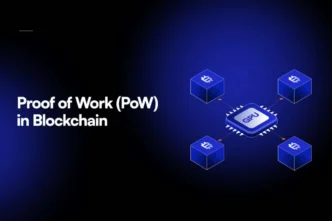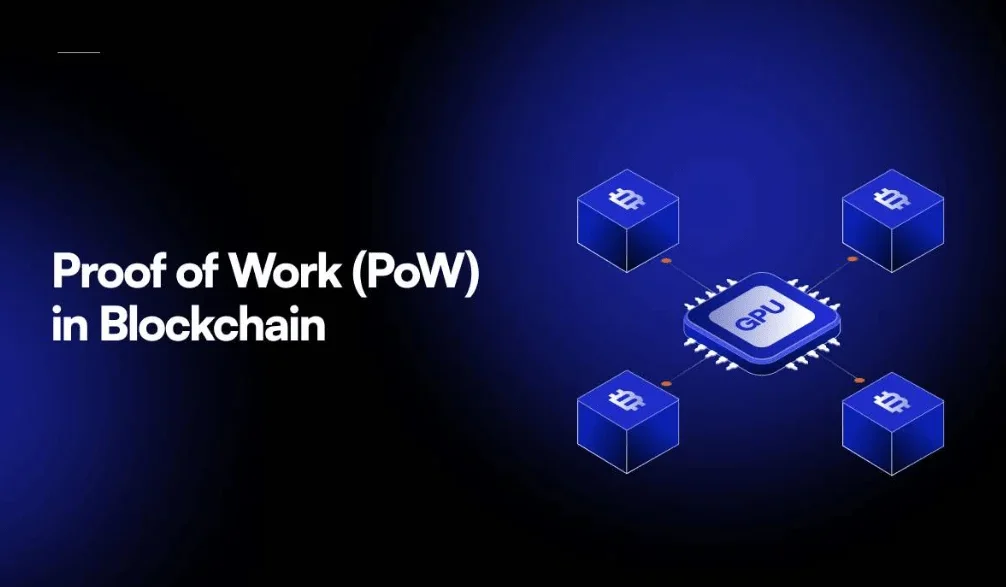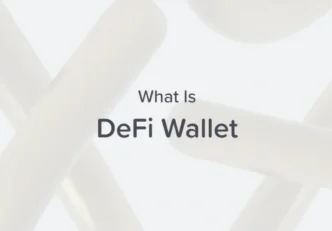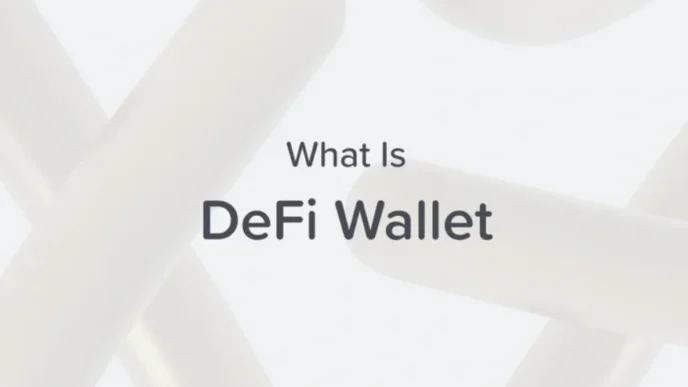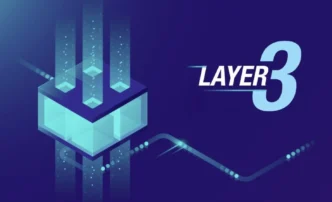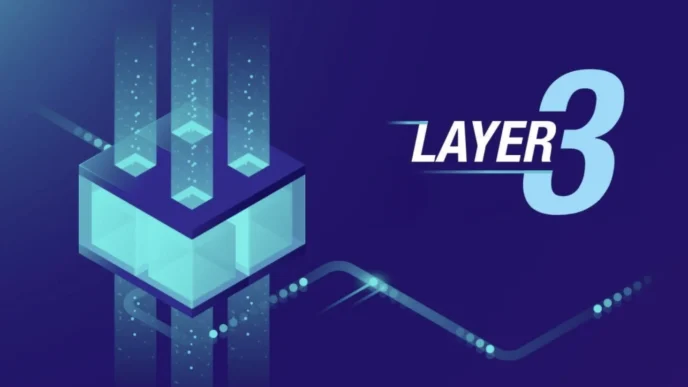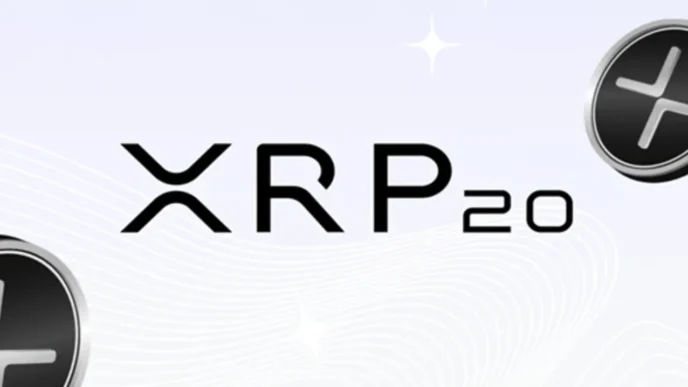What is Proof of Work (PoW)?
Proof of Work (PoW) is a consensus mechanism used in blockchain networks to ensure the security and integrity of transactions. The concept was first introduced by Cynthia Dwork and Moni Naor in 1993 to deter denial-of-service attacks and other abuses.
However, it was Hal Finney who applied this concept to digital tokens in 2004, which later became a fundamental part of the Bitcoin blockchain introduced by Satoshi Nakamoto in 2009.
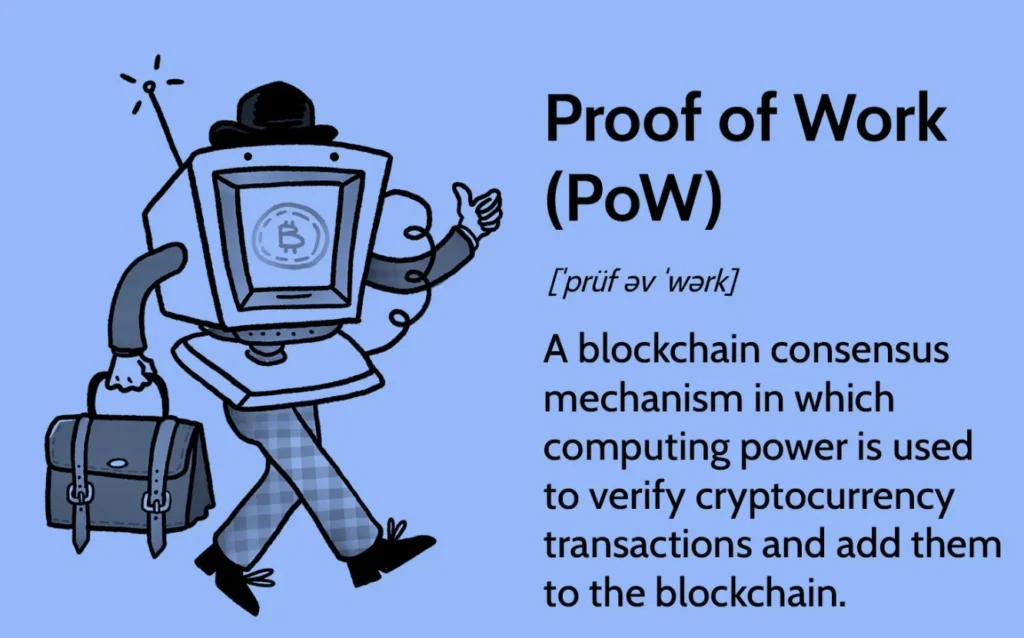
In PoW, miners compete to solve complex cryptographic puzzles using significant computational power.
The first miner to solve the puzzle gets the right to add a new block of transactions to the blockchain and is rewarded with cryptocurrency. This mechanism ensures that transactions are validated and prevents double-spending, making the network secure and decentralized.
How Proof of Work Ensures Network Security
Proof of Work ensures network security by making it computationally difficult to alter any information on the blockchain.
When a miner solves a cryptographic puzzle, they produce a hash that proves they have performed the necessary work. This hash is easy for other network participants to verify but extremely hard to create without the required computational effort.
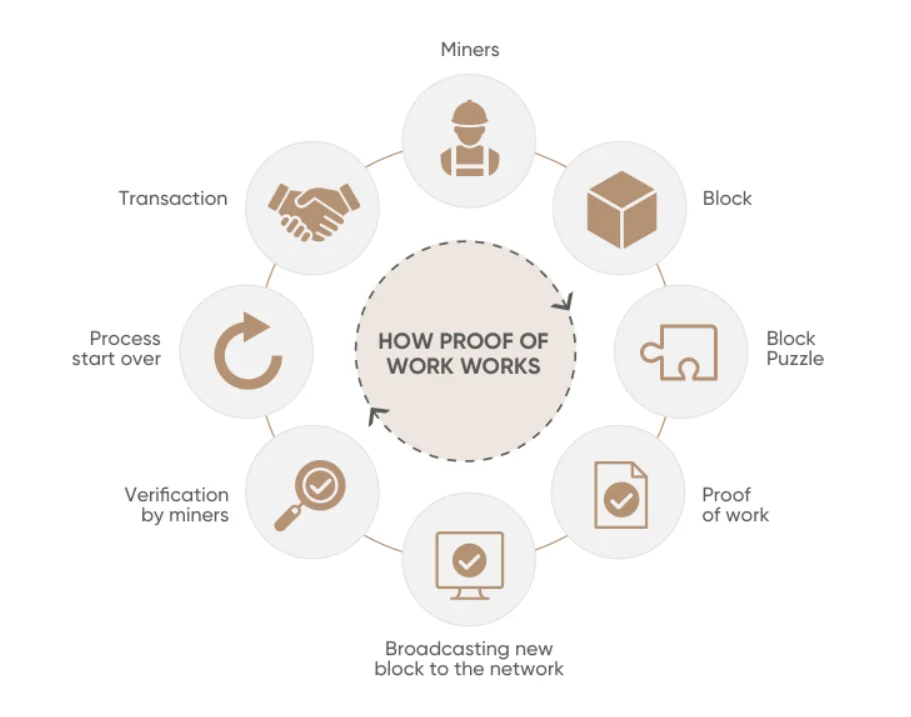
Miners use specialized hardware to solve these puzzles, which consume a significant amount of electricity. This high energy requirement ensures that any attempt to alter transaction data would be prohibitively expensive and computationally impractical.
Related: What is a God Candle? Understanding This Crypto Phenomenon
Additionally, as more miners join the network, the difficulty of these puzzles adjusts to maintain a steady rate of new blocks being added to the blockchain.
By decentralizing the validation process across a network of miners, PoW prevents any single entity from gaining control over the blockchain.
This decentralized approach makes it nearly impossible to tamper with transaction records without controlling a majority of the network’s computational power, known as a 51% attack. As a result, PoW provides robust security for blockchain networks, ensuring the integrity and trustworthiness of transactions.
Proof of Work Mechanism
Proof of Work (PoW) is a foundational element in many blockchain networks, including Bitcoin. It ensures security and decentralization by requiring miners to solve complex puzzles.
Steps in the Proof of Work Process
- Creating a Block: Miners collect transactions into a block.
- Solving the Puzzle: Using computational power, miners solve a cryptographic puzzle.
- Adding to the Blockchain: The first miner to solve the puzzle validates the block, adding it to the blockchain and receiving a reward.
This process, known as mining, secures the network by making it computationally difficult to alter the blockchain.
Energy Consumption and Environmental Impact
Mining consumes a significant amount of electricity due to the computational power required. For instance, Bitcoin mining uses more energy than some countries.
This high energy demand raises environmental concerns and has led to debates about the sustainability of PoW.
Alternatives like Proof of Stake (PoS) are being explored to reduce energy consumption while maintaining security and decentralization.
Proof of Work vs. Other Consensus Mechanisms
Proof of Work (PoW) is just one of several consensus mechanisms used in blockchain technology. Each mechanism has its own strengths and weaknesses, impacting how different cryptocurrencies operate.
Proof of Work vs. Proof of Stake
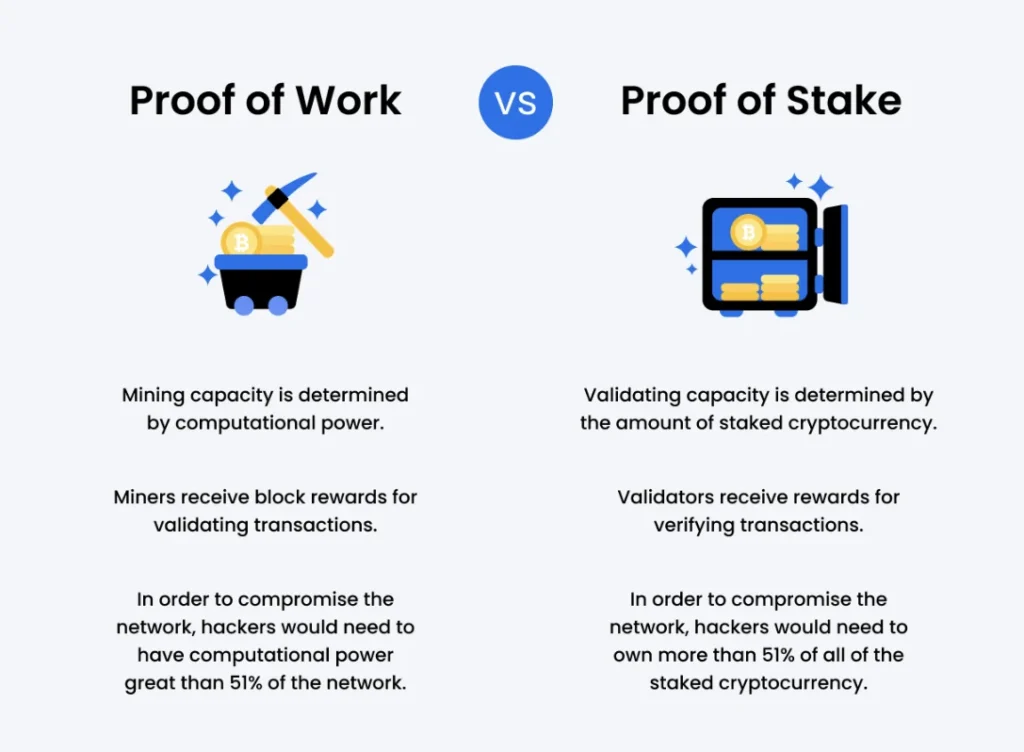
Proof of Work (PoW) is a consensus mechanism where miners solve complex cryptographic puzzles using significant computational power. The first miner to solve the puzzle gets to validate transactions and add a new block to the blockchain, receiving cryptocurrency as a reward. This method secures the network but requires substantial energy and computing resources, which can be environmentally taxing. It is widely used by cryptocurrencies like Bitcoin.
Proof of Stake (PoS), on the other hand, selects validators based on the number of coins they hold and are willing to “stake” as collateral. Validators are chosen to create new blocks and validate transactions, receiving rewards for their participation. PoS is considered more energy-efficient since it doesn’t rely on intensive computational work. However, it can lead to centralization, as those with more coins have more influence. Cryptocurrencies like Ethereum are transitioning to PoS to reduce energy consumption.
Future of Proof of Work
The future of Proof of Work is subject to ongoing debate. While PoW is valued for its security and decentralization, its high energy consumption is a significant drawback. Efforts are being made to develop more efficient PoW algorithms and integrate sustainable energy sources into mining operations.
Meanwhile, many newer cryptocurrencies are adopting Proof of Stake due to its lower environmental impact and greater scalability. Ethereum’s transition to PoS, known as “the Merge,” significantly reduced its energy usage, setting an example for other networks.
Despite these changes, PoW remains a robust and trusted mechanism, especially for established cryptocurrencies like Bitcoin. Innovations in both PoW and PoS, as well as the potential development of hybrid models, will continue to shape the landscape of blockchain consensus mechanisms.
This comparison highlights the ongoing evolution of consensus mechanisms in the crypto world, balancing security, efficiency, and environmental considerations.
